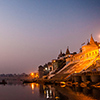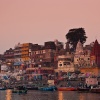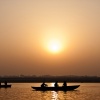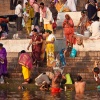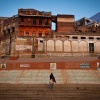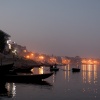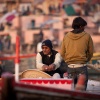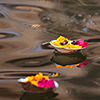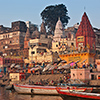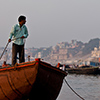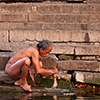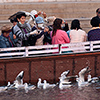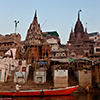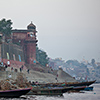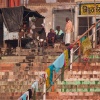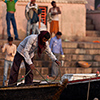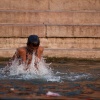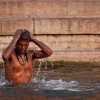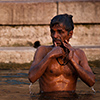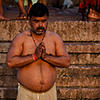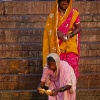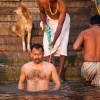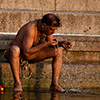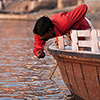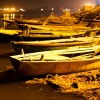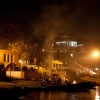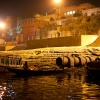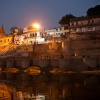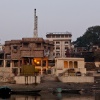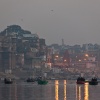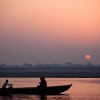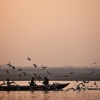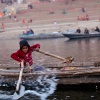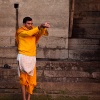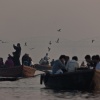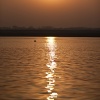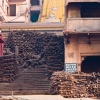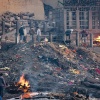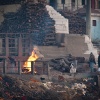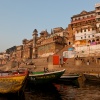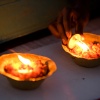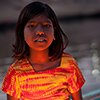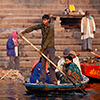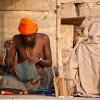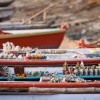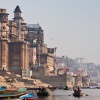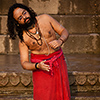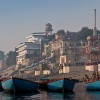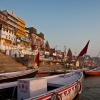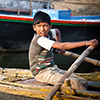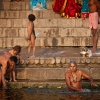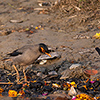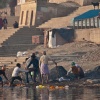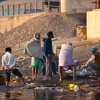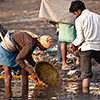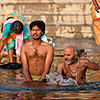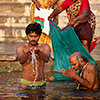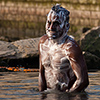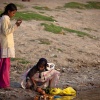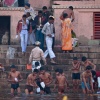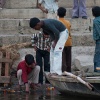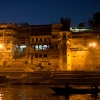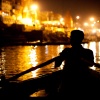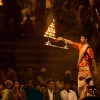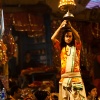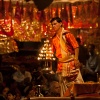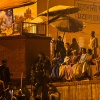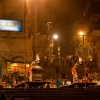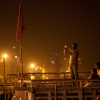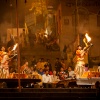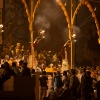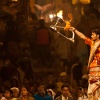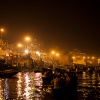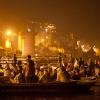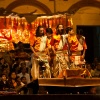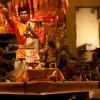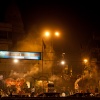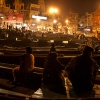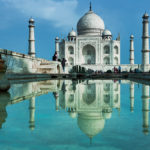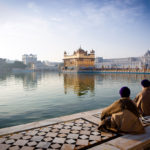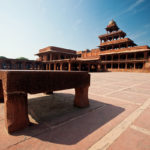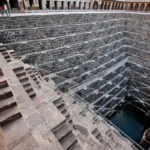Divine Vārānasi – Stinking to Heaven high
Vārānasi, the metropolis at the Ganga River, is one of India’s oldest towns and central sanctuary of Hinduism. No other India picture is as famous as the Hindu pilgrims praying and washing themselves in the waters of Ganges River at the so called Ghats. There is no better reflection of the Hindu society than this river. For most of them Vārānasi is definitely the holiest spot on Earth, though for some of them this means some enormous exploitation potential they are taking advantage of with utter disregard..
Life is mainly happening at the river, hence it comes as no surprise that Vārānasi’s biggest attraction is the boat ride on Ganges along the Ghats and literally all hotels are offering them for more or less small money. Small hotels often can only book small boats; hence staying in a cosy guesthouse is an advantage when wanting to enjoy Vārānasi from a more intimate side in high season. Though, a boat ride on Ganges River can quickly become a brow furrowing practical lesson in human anatomy and its levels of decay when next to you the rest of a human ribcage still being spangled with flesh tatters resurfaces from the murky river’s bottom. After death many Hindu want their ash to be spread over the Ganges to start their post-death journey to Nirvana. Poor Nirvana, as it’s just disgusting what your worshippers are delivering you by the river.
Every evening at 6:30pm the holy Ganga Aarti ceremony starts at Dasaswamedh Ghat. Main part of this ceremony is fire and incense getting swirled through the air by professional actors while bells and sitars are played in the background. The priests and trance pretending actors show that this evening is nothing but a professional showcase. It is as serious as the guys wrapped in American, Russian and NVA military suits standing at Berlin’s Check Point Charlie.
Though, Indians as well as tourists from abroad enjoy this event despite becoming heavily attacked by mosquitos. At dusk as well as dawn Ganges River seen from space appears spangled with boats all over. Another favourite is having a Yoga course in the morning while the Guru is shouting his commands over entire Kedar Ghat.
Except the not really invitingly looking cremation Ghats there is not much to see about a Hindu body incineration itself. The corpse gets covered by wood and is to boot wrapped in a burial shroud. Even the nasty smell involved in suchlike burnings is kept within limits as the burned sandal wood is gilding everything. In fact the funeral piles are blazing 24 hours a day as dying in Vārānasi is said to enable Hindus escaping from the rotation of reincarnation.
Death is no taboo issue and the cremations there are held in public. A photo on the other hand is a document. Hence from an ethic point of view both things are compatible by all means. It’s the photographer who is responsible for all things to be seen in the end. Photographing in an all too demonstrative way isn’t recommended though as there is a kind of a mafia following everyone to any Ghat and as soon as you re-enter land again, they push you to pay lot of money even by physical violence.
Using the argument to be in World’s holiest city, almost 99% of the tourists are getting well and properly ripped off. This often starts with an offer for a sight-seeing tour that finally leads into trying to sell you spices or silk and ends in hotel-side offered prostitution for men travelling alone. There is no other interpretation how to understand the question, if an Indian woman is wanted, everything is possible from the age of 15 to 50. While the first thing is bothering but can be brought to an end, the latter offer is just shocking.
Vārānasi isn’t less clean than any other big Indian city, actually it’s even worse, as plenty of cow shit on the roads and lanes won’t ease your walks through the city. Here and there streets and lanes are getting calcimined, but that doesn’t help much in case of a cadaver bloated by the sun (drowned body swimming in the Ganges as well as dead camels and cows lying on the roads). However, the “cherry” on the cake were people confusing Ghats and streets with the loo, when dropping their pants at daytime and leaving their excrement behind.
There is nothing to be said against that a river and an elixir of life such as water gets worshipped god-like. This is even the sort of worship and appreciation our subculture of careless consumption is definitely lacking in. Why but why are Indians torturing their river? The water quality got better in the past ten years, though the big cities located at Ganges River, also Vārānasi, are still polluting the Ganges as they are disposing their untreated waste water into the river. Not to mention the river’s upper reaches where dead bodies still got sent to Nirvana in one piece and not burned to ash. The reason is a social problem, namely the high expenses of burning a dead body.
Among Vārānasi’s 84 Ghats three cremation places can be found (Harish Chandra, Sankatha and the main Ghat Manikarnika), two for poor and one for wealthy people. Even though a “discount price” is offered at the price worthier Ghats, cremations there are still way too expensive for many people. Vārānasi doesn’t only tourists rip off tourists. Hence Hindus don’t really stop throwing dead bodies as one piece into Ganges River, which is not the way how to treat a deity, least of all a vitally important resource like water.
Nevertheless for many travellers in Vārānasi the dream of India, the ideal place to be comes true. Despite all negative things mentioned before and even in face of a heavy touristic occupation the morning boat ride on Ganges river can become admittedly a very romantic and authentic-intimate experience in terms of meeting India’s spiritual-religious side, which can be easily seen when watching the photos. If applying logic standards, then solely the deep, heartfelt and strong belief in reincarnation and a better next life is able to explain why Hindu people are accepting a life in dirt and highly unhygienic circumstances and why they are making it worse instead of changing it. If you will make it to Vārānasi then please reject child labour. Small girls and boys have to go to school and learn instead of carrying tourists rowing-wise over morning Ganges River.
